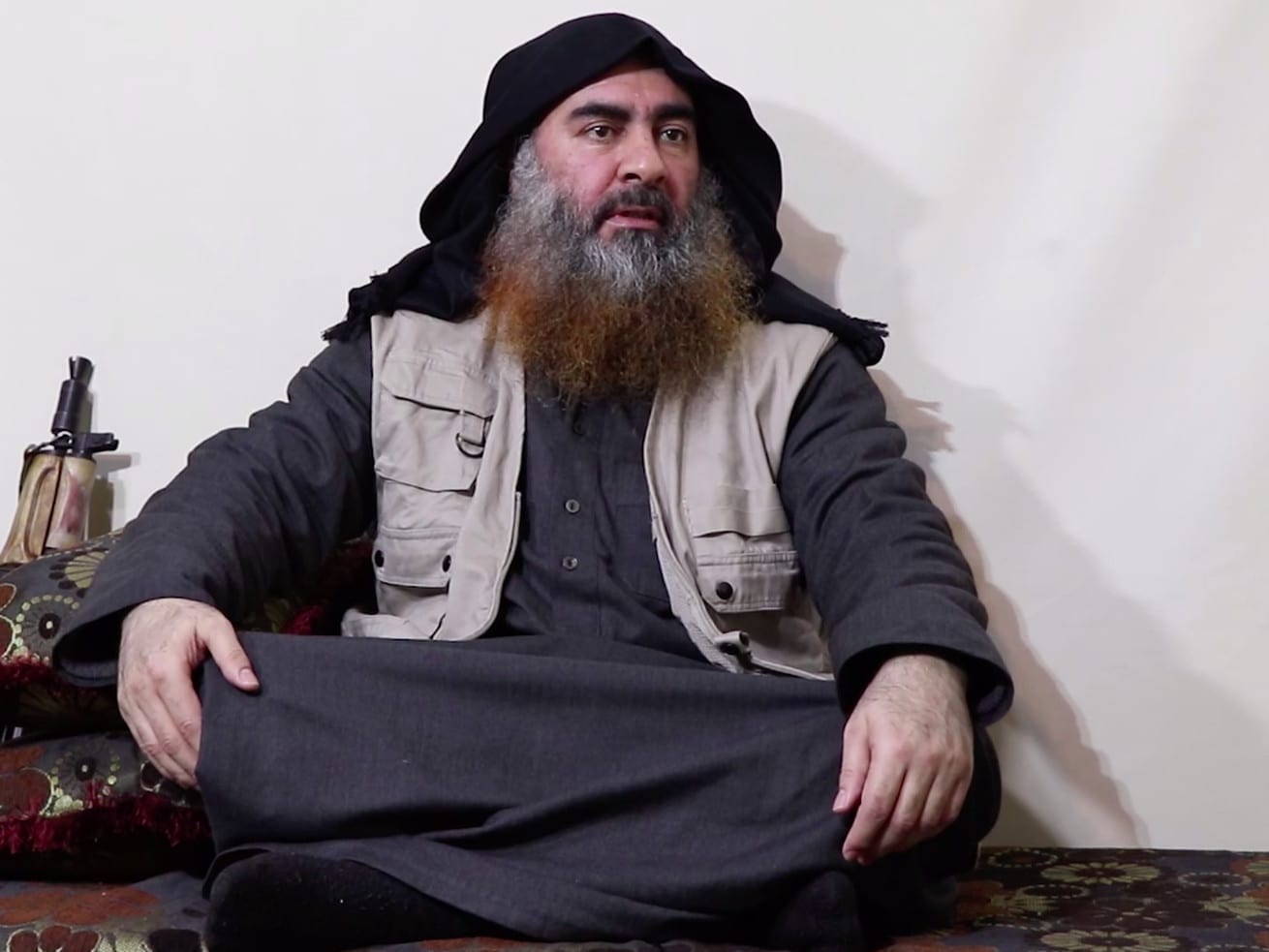“Last night the United States brought the world’s number one terrorist leader to justice,” Trump said. “Abu Bakr al-Baghdadi is dead.”
Abu Bakr al-Baghdadi, the elusive ISIS leader whose death has been incorrectly reported several times over the last five years, died during a US military raid, according to President Donald Trump.
Trump announced the death Sunday, after hinting at the news on Twitter on Saturday night, tweeting, “Something very big has just happened!”
At a Sunday press conference at the White House, Trump said, “Last night the United States brought the world’s number one terrorist leader to justice. Abu Bakr al-Baghdadi is dead.”
According to Trump, the terrorist leader died after detonating a suicide vest following a battle at an ISIS compound. Al-Baghdadi has been declared dead before; the president said US officials are confident he is now actually dead due to a DNA test conducted on the leader’s body.
The operation was carried out by US forces alone; Trump said other countries and groups gave support, telling reporters, “Russia was great, Iraq was excellent.” Trump also thanked Kurdish forces in Syria, who the president said gave the US intelligence that aided the operation.
The president gave an unusual amount of detail about the operation during the conference, telling reporters about the US’ approach to the compound by air, the gunfire US helicopters faced, and describing the tactics used to seize the compound. Trump also described al-Baghdadi’s final moments a number of times, saying the leader died “whimpering and crying and screaming all the way.”
Trump said a number of other ISIS fighters were killed, and that an undisclosed number of adults and 11 children were captured by US forces.
The president told reporters that he did not inform Congress, including House Speaker Nancy Pelosi, beforehand, citing concerns that the information would leak. House Intelligence Committee Chair Rep. Adam Schiff has said that he was not briefed afterwards, either.
What does this mean for ISIS?
Abu Bakr al-Baghdadi has been a shadowy figure throughout the years, releasing only a handful of communiqués even during times of great significance for his group. He made only one public appearance as ISIS’ leader in July of 2014, at the Great Mosque of Mosul, shortly after ISIS had declared its caliphate on June 29, 2014. He also released a handful of audio recordings, including one in November of 2016 in which he reassured his fighters just as US-backed forces in Iraq breached the outskirts of Mosul, the group’s final stronghold within Iraq.
In April of this year, he released a propaganda video in which he vowed to continue the fight, following the loss of ISIS’ final territorial holdout in Syria.
His death has been reported on several occasions, but he has always returned. This time, however, Trump has said the former leader is actually dead.
What al-Baghdadi’s death means for ISIS remains to be seen. The group holds little of the territory it controlled in Iraq and Syria as a caliphate, or Islamic state, in June of 2014. And ISIS has been on the ropes since about 2017, after Iraqi forces retook Mosul. In March of this year, the caliphate effectively collapsed when the group lost its final stronghold in Syria following extensive fighting with the Syrian Democratic Forces (SDF), a militia composed of Kurdish and Arab fighters backed by the US.
Trump has repeatedly pointed to that event as evidence that ISIS is dead. But although their self-declared state no longer exists geographically, the organization still operates around the world. According to a Pentagon report from August, there are likely between 14,000 and 18,000 ISIS “members” in Iraq and Syria, including some 3,000 foreigners. The group has financial holdings in Libya and central Africa, according to that same report, and followers in Europe and elsewhere.
Many captured ISIS fighters, as well as women and children related to those fighters, have been held in SDF-run detention centers within Syria. Over the last few weeks, as US forces have departed from Syria, Turkey entered northern Syria and began a conflict with SDF forces. As Vox’s Jen Kirby has reported, this left those Kurdish fighters alone to both guard the detention centers and fight off the encroaching Turkish army — leading to the escape of several hundred ISIS-related fighters.
This weakening of the SDF forces, who had acted as the US’ chief ally in the fight against ISIS within Syria, has led some experts on the region to fear an ISIS revival. In his press conference, Trump said that Baghdadi’s death signals that the US will fight his organization until it is completely defeated. He also said that the raid against Baghdadi allowed the military to gather intelligence that will be useful in this pursuit.
Author: Anya van Wagtendonk
Read More



